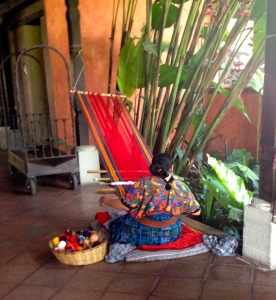 On her way back to her clinic, Sofia smiles. Nothing could compare to seeing a new mother caring for her healthy baby in her own home after you’ve spent months working as a team and just a few days ago made it through the delivery. Experiences like that top Sofia’s “why-I-love-being-a-midwife” list. If only all her work weeks could start off this way!
On her way back to her clinic, Sofia smiles. Nothing could compare to seeing a new mother caring for her healthy baby in her own home after you’ve spent months working as a team and just a few days ago made it through the delivery. Experiences like that top Sofia’s “why-I-love-being-a-midwife” list. If only all her work weeks could start off this way!
Along with that joy, a midwife-in-training is along for the ride. She’s bright-eyed and itching to get into things.
Sofia decides to redeem the drive time. “See that little spiral-bound book peeking out of my bag?” she asks.
“The blue one?”
“Yeah. Go ahead and take a look at it. You’re going to need one for yourself.”
The trainee retrieves the book and looks it over. “Understanding the Guatemalan Patient: A Glossary of Spanish Medical Terms and Folk Medicine. This looks interesting, but, um, I did take medical Spanish in school. Did I say something wrong with the last client?”
“Oh, no, you did well! It’s just that, as you’ve learned, many of the women we serve in this area are from Guatemala. Some of them, like the mother we just visited. speak what I call ‘dictionary Spanish’. Others speak their own variety. Sometimes they grew up speaking Spanish as a second language after a Mayan dialect.”
“Can you give me an example?”
“I think you’ll see what I mean with our clients this afternoon.” Sofia grins. “Oh, and remember, as a midwife, sometimes your clients look to you for advice on all sorts of things.”
At the beginning of Sofia’s visit with her next client – a young mother from rural Guatemala accompanied by her cousin – nothing unusual happens. A few unique words are used, but the trainee catches on quickly. Sofia begins to wonder if she anticipated too much. Then her client says,
“Mi hermana me estaba preguntando si usted tendría consejo para ella acerca de su bebé que tiene rozadura.”
Sofia glances at her trainee who discreetly raises an eyebrow.
“Rozadura es cómo pañalitis, ¿verdad?” Sofia questions, even though she knows the answer. Both are used to mean diaper rash.
The client smiles and nods, “Sí, es como pañalitis.”
Sofia continues her conversation. Later that afternoon, the midwife-in-training comes to her looking a little less bright-eyed. “I’ve got to admit,” she says, “starting with that first office visit and continuing all afternoon, I’ve found out I don’t know Spanish as well as I thought I did. At least not the way these ladies speak it. And then there are all the folk medicine ideas I’ve never even heard of!”
Sofia’s encouraging nature kicks in. “Don’t worry; I think you’re gonna do great! Learning a language is a lifelong adventure. At least it seems like it has been for me.”
“Well,” she says with the smile in her eyes back on, “I know one thing; I’m going to buy myself one of those books!”
As the midwife-to-be heads back to work, Sofia smiles. Yes, training others is one more joy of this job.
Do you know a midwife who serves Hispanic women or would you like your own copy of Understanding the Guatemalan Patient? Check it out today on Amazon!










